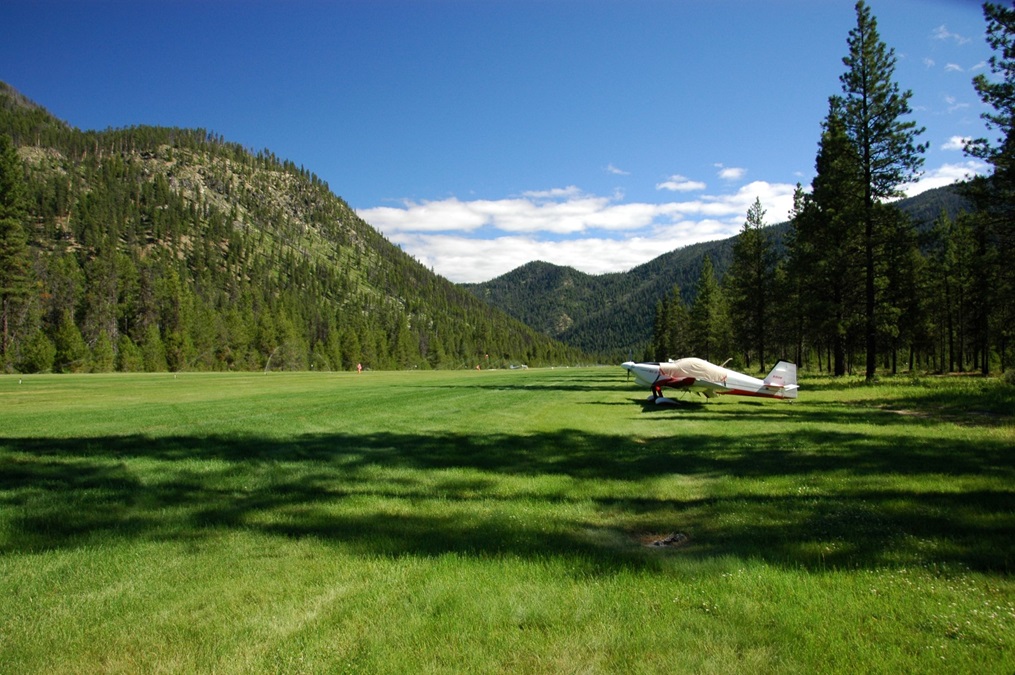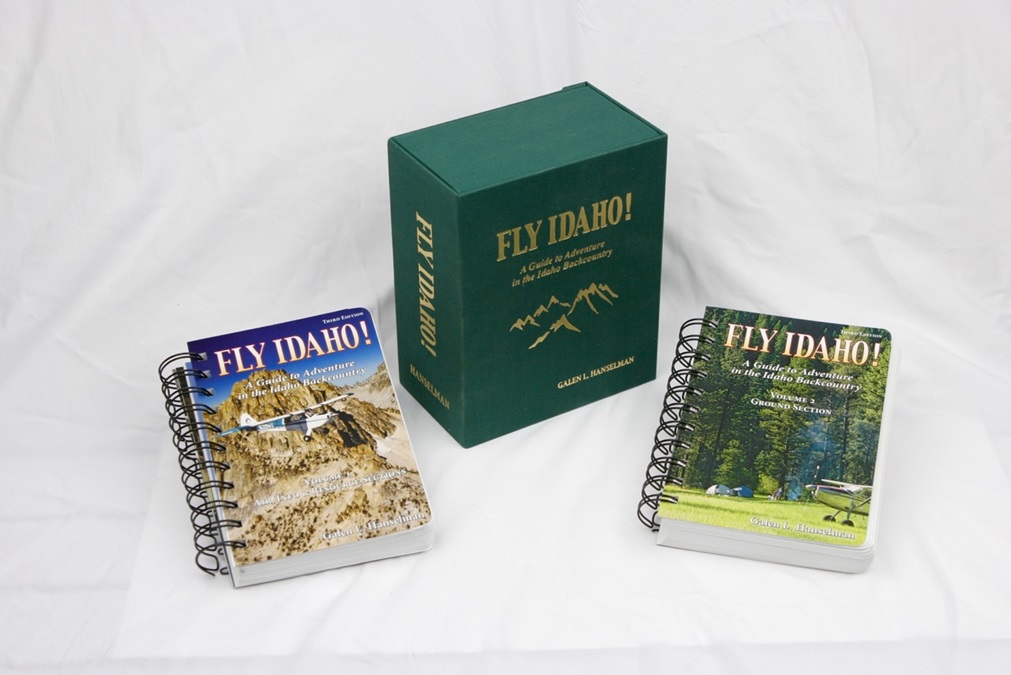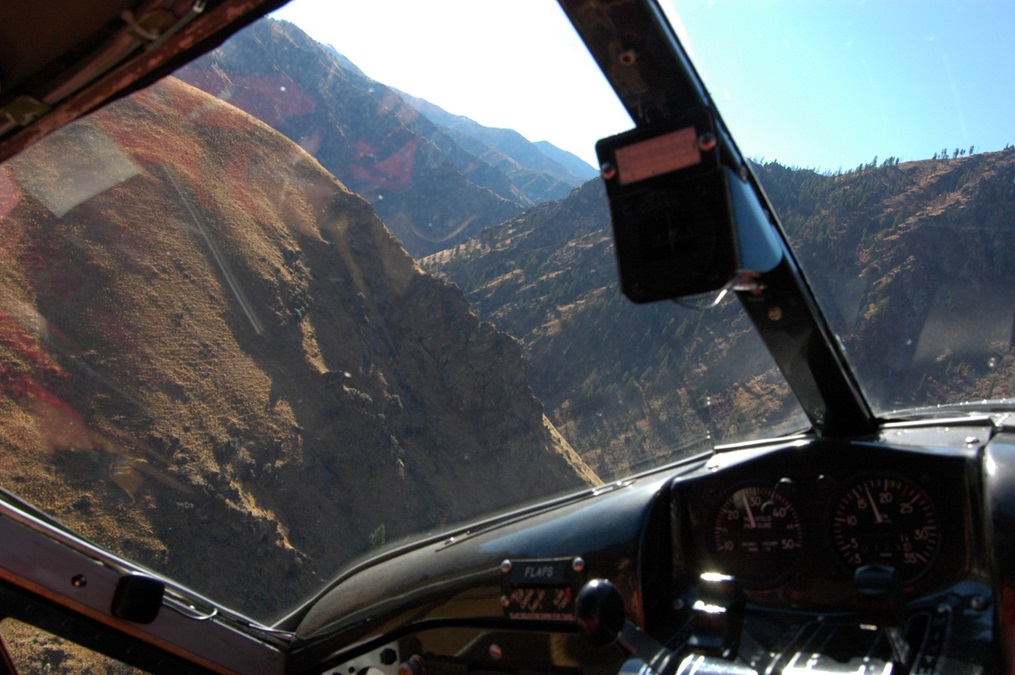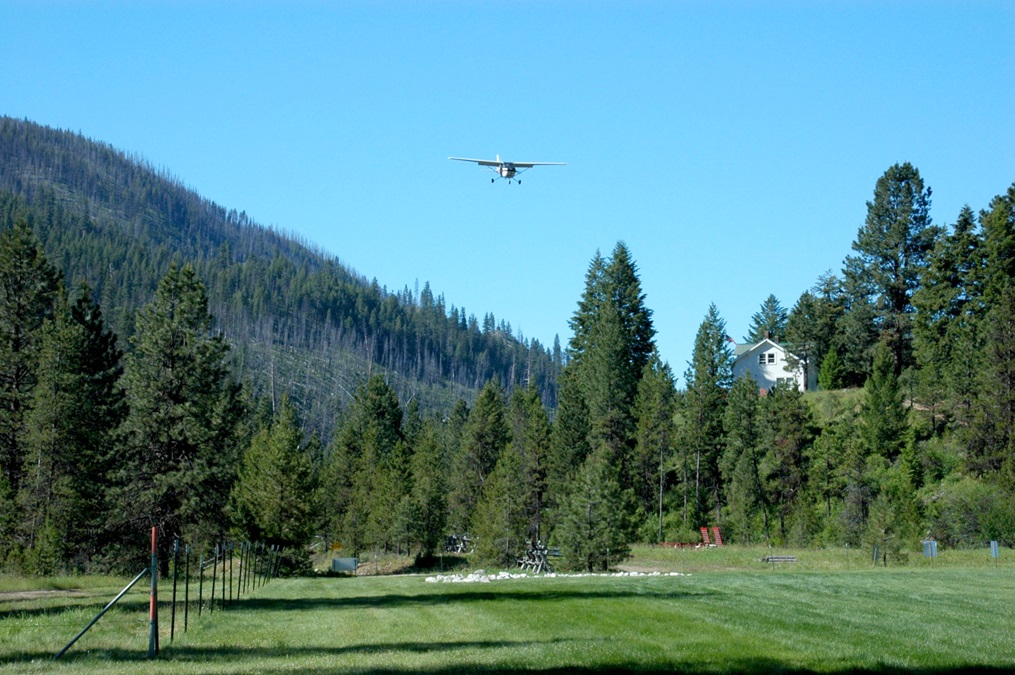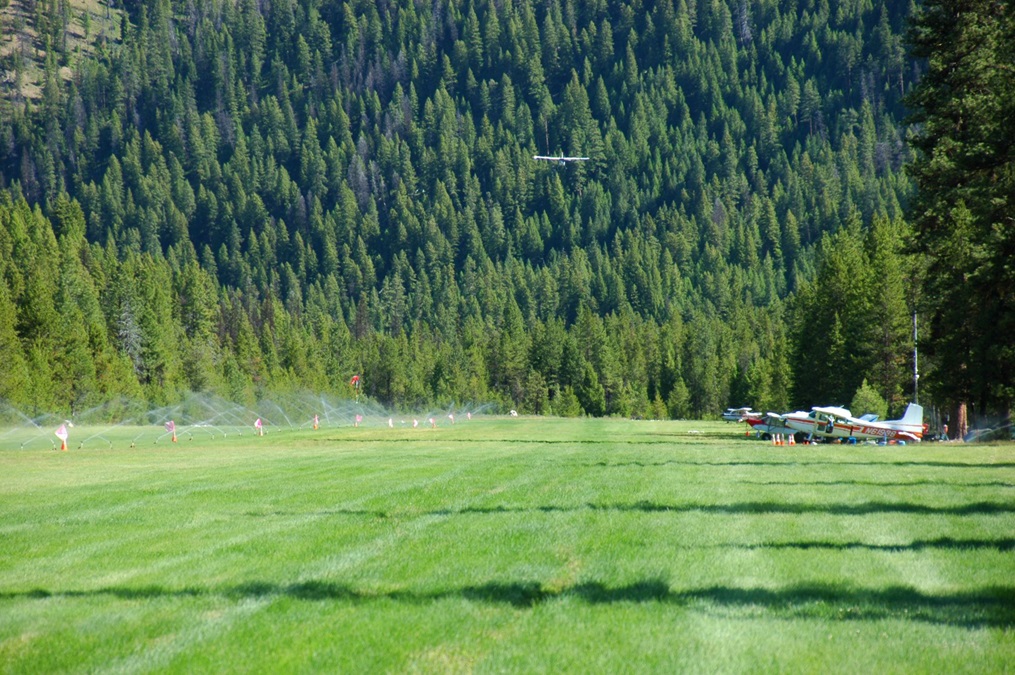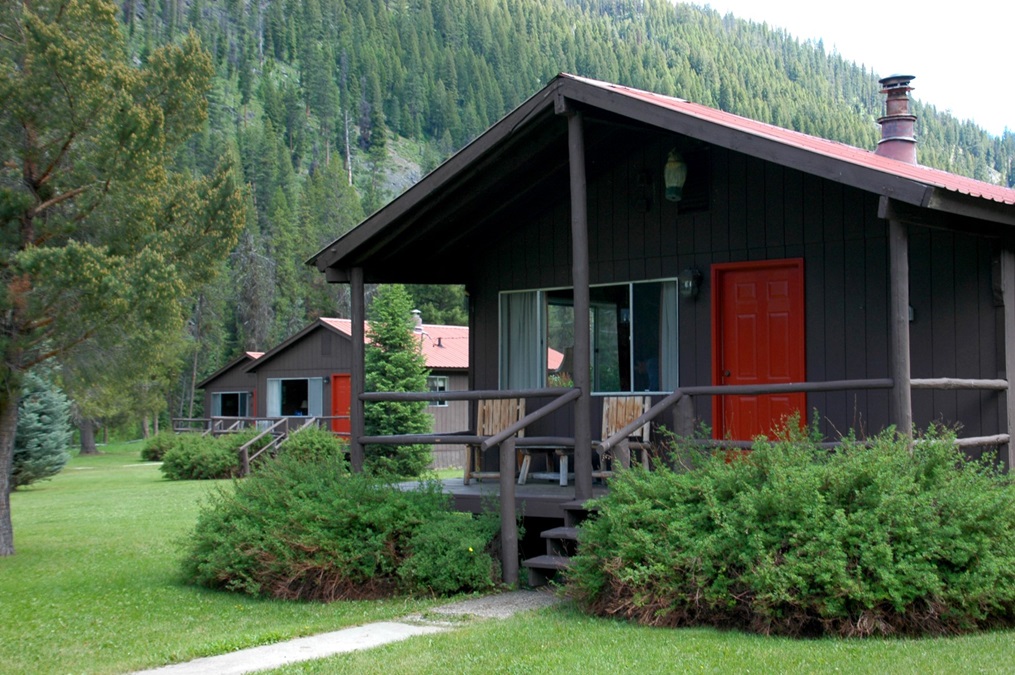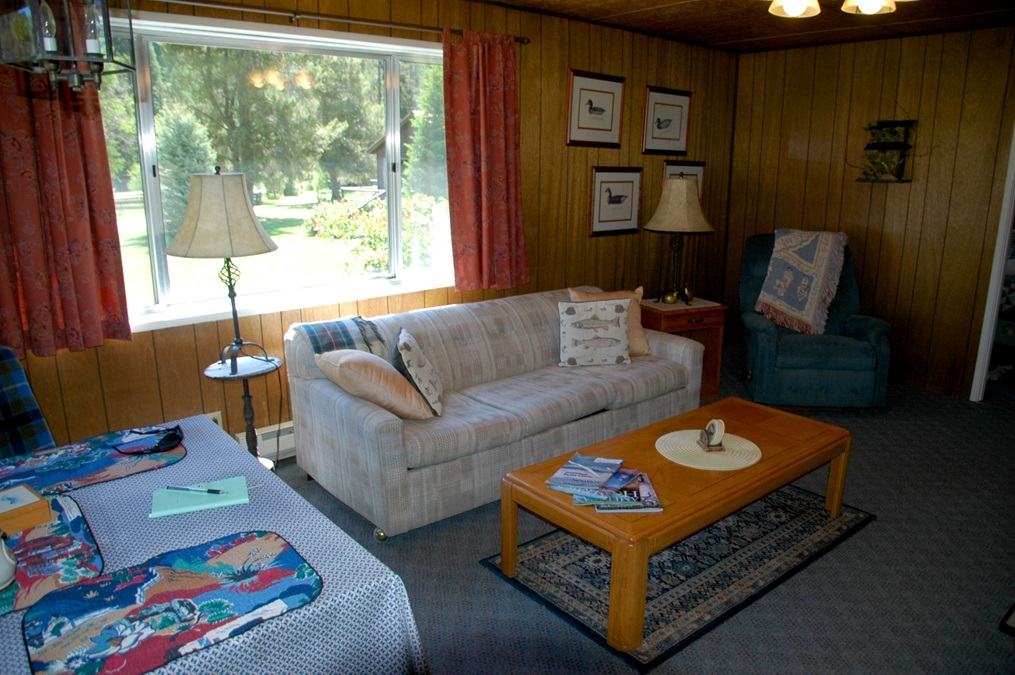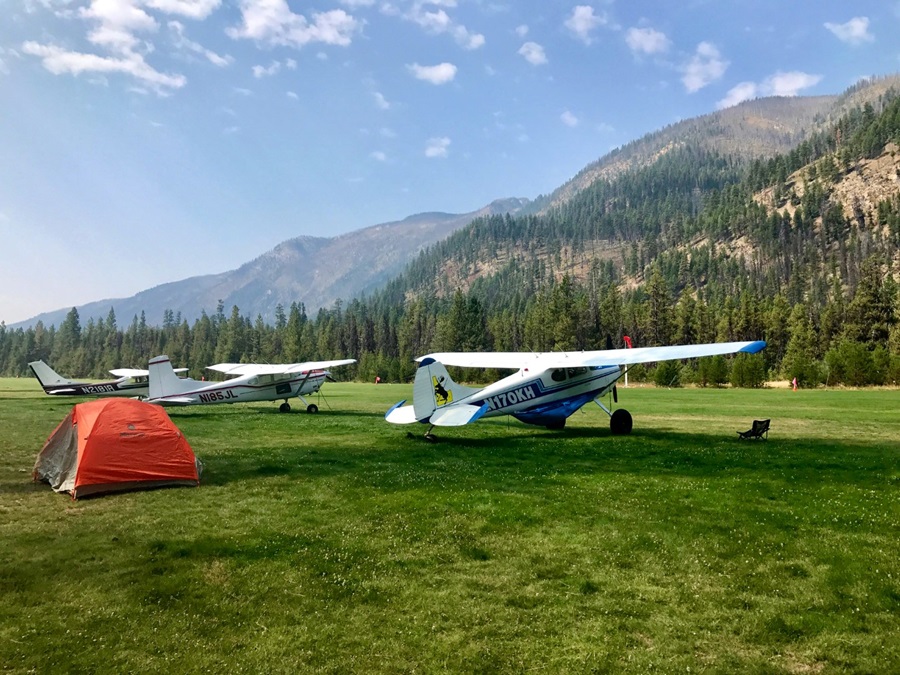Idaho's premier backcountry base
Johnson Creek, Idaho
During a flight between Heathrow and O’Hare, I passed some aviation magazines to my flight attendant and asked her to give them to the crew. They responded by inviting me up to the cockpit of the giant Boeing 747-400. As I sat in the right seat, talking with the crew about procedures and how to land such a huge airplane without breaking it into a million pieces, the distinguished-looking British captain interjected, “But you know what my very favorite thing to do is, in all of aviation? When I have a bit of time off, I’ll airline to Boise, Idaho, rent a 172, and fly to Johnson Creek.”

If you’re just getting started with backcountry flying, you might wet your feet first at Garden Valley, but Johnson Creek’s location, deep in the central Idaho mountains, makes it the perfect launching point for further adventures, or breakfast at places like Sulphur Creek, Dixie, Smiley Creek, or Flying B. Don’t fly to Idaho without the Idaho Aeronautical Chart, which shows all the strips you won’t find on the sectional, plus the two-volume Fly Idaho! Third Edition, which provides essential information and photos of 83 airstrips.
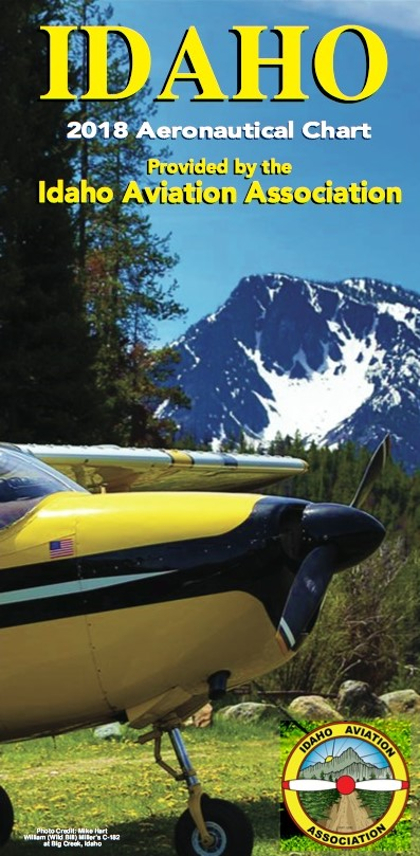
When vacationing in the backcountry, I prefer one of two methods. The first is to fly to a strip early in the morning, set up camp, spend the day exploring, sleep in the tent, and depart for the next strip early the next morning. The second method is to use one strip as a base camp from which to make daily forays, and this is where Johnson Creek comes in. Summer days are long, and winds usually die down in late afternoon/early evening, when there’s still plenty of light. Fly back to Johnson Creek after each day’s adventures and you’ll have access to bathrooms, hot showers, Wi-Fi, electricity to charge your devices, and a van you can take to Yellow Pine for a restaurant meal or basic groceries. For avgas, McCall is only 26 nautical miles west. McCall Aviation can shuttle you into town for groceries, or you can borrow a bike (provided for pilots by the Idaho Aviation Association) from the shed near the tiedowns. McCall is also home to McCall Mountain Canyon Flying Seminars, whose flight instructors specialize in mountain flying and canyon ops. I highly recommend bringing one of their CFIs along the first time you attempt to land at any of Idaho’s more challenging airstrips.
Recently I discovered a new way to enjoy Johnson Creek. Camping is fun, but sometimes my back longs for a real bed, and, much as I love airplanes, when “that guy” fires up his engine at 6 a.m., it’s not always a welcome sound. Just 3.8 miles south of the airstrip, right beside Johnson Creek, lies the Wapiti Meadow Ranch, with easily the best-equipped and most-affordable fly-in cabins in Idaho! Bring your own food or ask for a continental breakfast. Funny enough, a group of airline pilots had stayed there the night before us. Your hosts, Diana and Barry Bryant, know more about the area than anybody, going back four generations on this land. You can fish without a license in their large, stocked trout pond (see photos for more details on the ranch and cabins).
Two miles south of the strip you’ll find the Ice Hole, where the boulder-lined creek crosses a wide meadow. It’s a nice spot to swim or fish; licenses are available in Yellow Pine or online. The six-mile roundtrip Hot Springs Trail climbs 800 feet from the trailhead off the runway’s west side at midfield to a big bathtub, placed there decades ago by the Bryant family. Hot spring water runs into this tub, so you can enjoy a relaxing soak and an amazing view at the same time.
You’re here. Johnson Creek. The place pilots literally fly halfway around the world to experience. Enjoy!
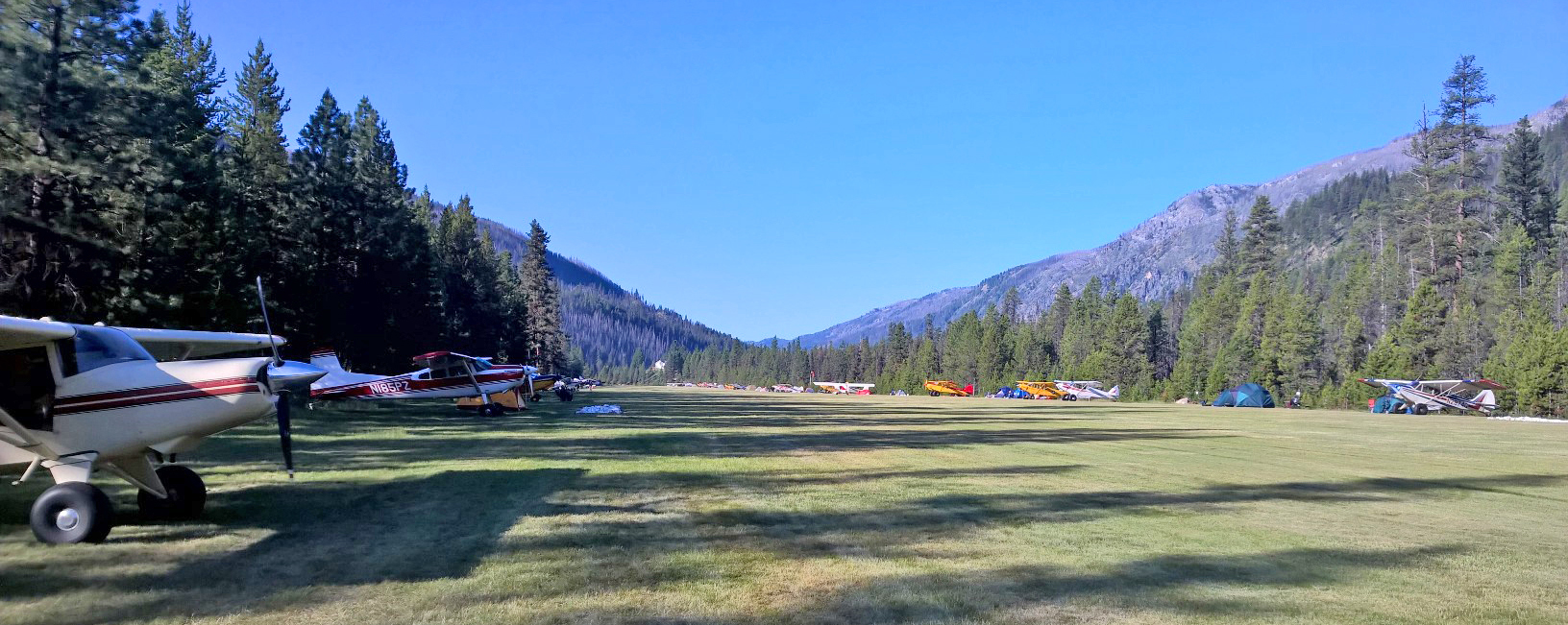
Share your favorite destination in the AOPA Hangar: Places to fly, things to do, where to eat!

